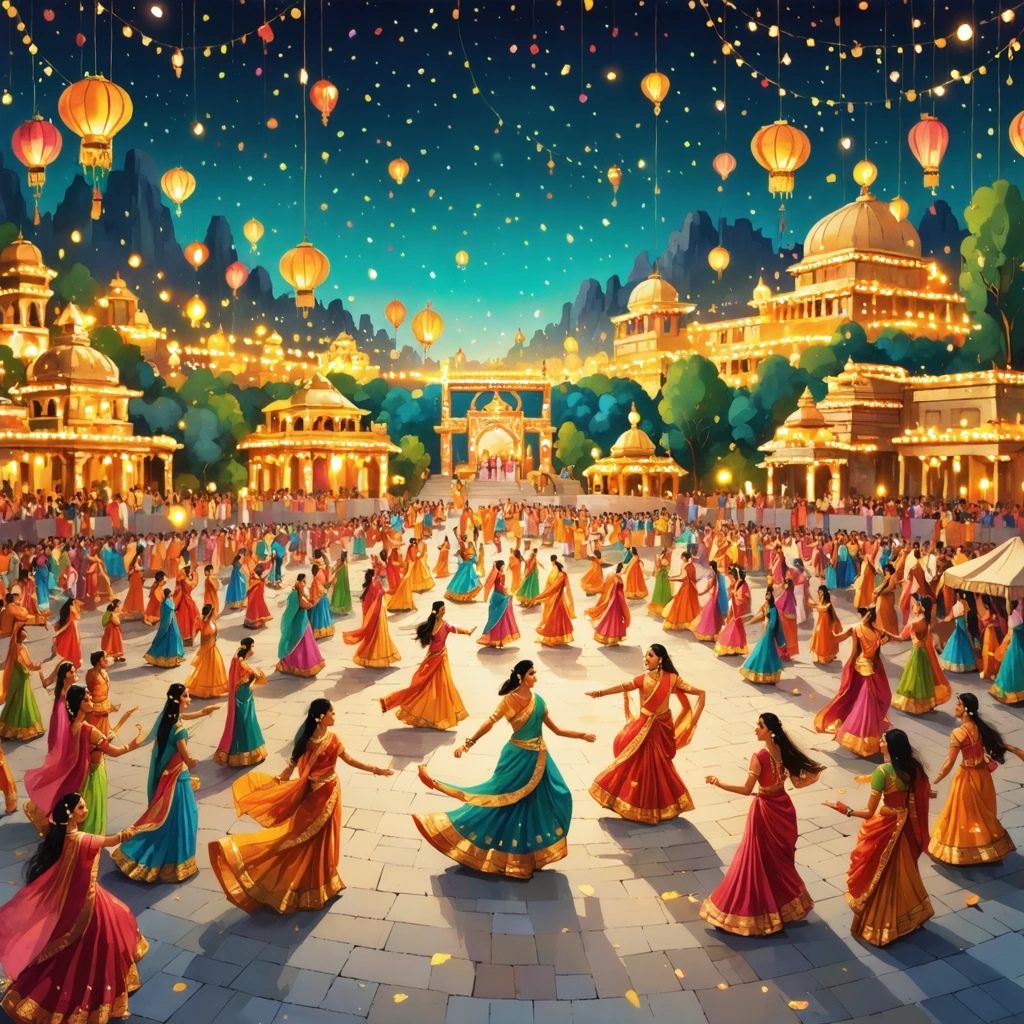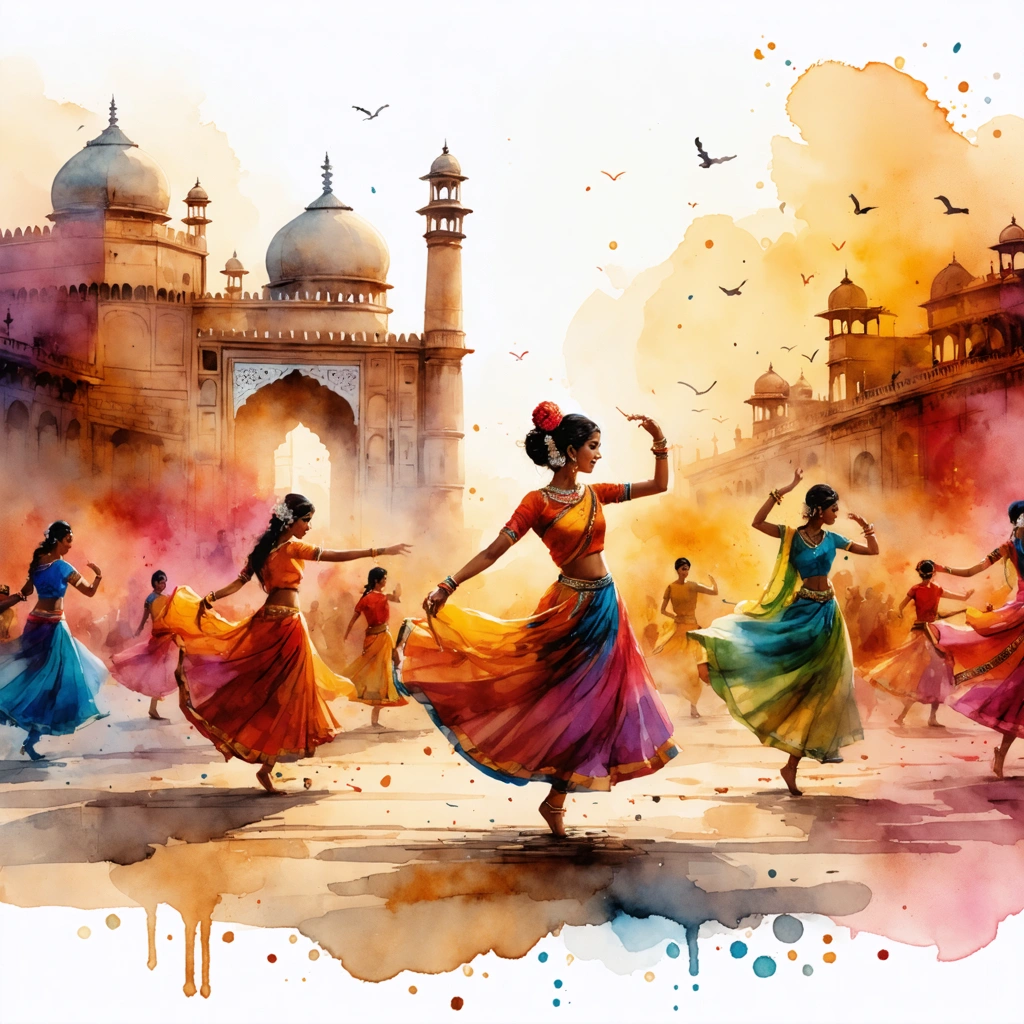
Why Dance Remains the Heartbeat of India’s Cultural Festivals
Imagine stepping into a vibrant Indian festival in 2025, where the air pulses with rhythm, and every footstep tells a story. Dance is not just an art form here; it’s the soul of celebration, a dynamic thread weaving together centuries of tradition and modern expression. Yet, as festivals evolve, there’s an intriguing question: how are iconic dance forms like Garba, Bhangra, and Kathak shaping these cultural moments today? Their impact goes far beyond entertainment—it’s about identity, connection, and cultural continuity.
In recent years, many cultural festivals have faced a subtle challenge. With rapid urbanization and digital distractions, younger generations sometimes feel detached from their heritage. Dance, however, emerges as a powerful bridge, reconnecting communities with their roots in a way that words alone cannot. This makes understanding the Garba Dance Impact, Bhangra Dance Impact, and Kathak Dance Impact essential for anyone passionate about preserving and celebrating India’s rich tapestry of traditions in 2025.
The Transformative Power of Traditional Dance at Festivals
Think about the last time you witnessed a traditional dance at a festival. The energy, the costumes, the music—it’s a sensory experience that leaves a lasting impression. But beyond the spectacle lies a deeper influence. Each dance form carries unique cultural narratives and emotional resonance, shaping not only the festival’s atmosphere but also the community’s sense of pride and belonging.
Take Garba, for instance. Originally a devotional dance from Gujarat, Garba has transcended its religious origins to become a symbol of collective joy and unity during Navratri celebrations. The Garba Dance Impact is visible in how it encourages participation across age groups and social backgrounds, fostering inclusivity and shared cultural pride. In 2025, this dance form is also adapting to contemporary music trends, blending tradition with innovation, thus keeping the festival vibrant and relevant.
Similarly, Bhangra, with its roots in Punjab’s agricultural festivities, has exploded onto the national and global stage. The Bhangra Dance Impact at cultural festivals is not just about high-energy moves; it’s about resilience, celebration of life, and cultural assertion. In 2025, Bhangra is often featured in fusion performances, blending with hip-hop and electronic music, attracting younger audiences and ensuring the festival remains a living, breathing celebration rather than a museum piece.
Then there’s Kathak, one of the eight classical dance forms of India, known for its intricate footwork and storytelling prowess. The Kathak Dance Impact at festivals is profound in how it preserves ancient myths and legends, yet also adapts to contemporary themes and social narratives. This dynamic balance keeps audiences engaged and sparks dialogue about cultural identity and continuity amidst rapid social change.
What This Article Will Explore
In this post, we’ll dive deep into how these dance forms—Garba, Bhangra, and Kathak—are influencing India’s cultural festivals in 2025. We’ll examine their evolving roles, their impact on community cohesion, and how they’re navigating the delicate balance between preserving tradition and embracing modernity. Whether you are a dance enthusiast, cultural scholar, festival organizer, or simply curious about India’s vibrant cultural landscape, this exploration will offer insights into why dance remains a vital force in festival celebrations.
Get ready to discover:
- How the Garba Dance Impact is fostering inclusivity and innovation during Navratri and beyond.
- The ways in which the Bhangra Dance Impact is energizing festivals with its fusion styles and cultural pride.
- How the Kathak Dance Impact preserves storytelling traditions while engaging with contemporary audiences.
By the end, you’ll not only understand the significance of these dance forms but also appreciate how they help festivals transcend mere events—they become living celebrations of India’s rich cultural soul.

Cultural Festivals’ Dance Impact: Exploring the Impact of Dance Forms in India’s Cultural Festivals in 2025
How do traditional dance forms influence India’s cultural festivals in 2025?
India’s cultural festivals are vibrant celebrations deeply intertwined with traditional dance forms that carry centuries of history, spirituality, and community identity. In 2025, these dance forms continue to shape the social and cultural landscape by fostering communal harmony and preserving heritage. Dance at festivals is not mere entertainment; it is a living expression of cultural narratives and values.
The impact of dance forms during festivals can be analyzed through several dimensions:
- Cultural Preservation: Dance forms like Garba, Bhangra, and Kathak serve as vehicles for passing down folklore, religious stories, and traditional aesthetics to younger generations.
- Community Engagement: Festivals featuring these dances promote social cohesion by bringing diverse groups together to celebrate shared customs.
- Economic Impact: Performances attract tourism, create employment for artists, and stimulate local economies through festival-related commerce.
- Modern Adaptations: Contemporary interpretations and fusion performances at festivals help keep these dance forms relevant and appealing to younger audiences.
What is the Garba Dance Impact on cultural festivals in India in 2025?
Garba, originating from Gujarat, is a traditional folk dance performed during Navratri, one of India’s largest cultural festivals. In 2025, the Garba dance impact extends beyond entertainment, reinforcing religious devotion and community solidarity.
Several key aspects highlight Garba’s role in festivals:
- Spiritual Significance: The circular movements symbolize the cyclical nature of life and devotion to Goddess Durga, making Garba an integral part of Navratri rituals.
- Social Integration: Garba brings together people of all ages and backgrounds, promoting inclusivity and collective joy.
- Tourism Boost: Cities like Ahmedabad and Vadodara see a surge of domestic and international visitors eager to experience authentic Garba nights, contributing significantly to local economies.
- Global Outreach: Garba has gained popularity globally, with diaspora communities organizing festivals that maintain cultural ties and introduce Garba to new audiences.
In 2025, technological integration such as virtual Garba events and live streaming has further expanded participation, enabling remote communities to join festivities and preserving the dance form’s vitality.
How does the Bhangra Dance Impact shape cultural festivals in India in 2025?
Bhangra, a lively folk dance from Punjab, plays a crucial role in cultural festivals like Baisakhi, which celebrates the harvest season and Sikh heritage. The Bhangra dance impact in 2025 is characterized by its energy, community spirit, and role in cultural expression.
Key elements of Bhangra’s impact include:
- Celebration of Agrarian Roots: Bhangra’s vigorous movements echo the joy and vitality of harvest time, linking cultural identity to agrarian traditions.
- Youth Engagement: The dynamic nature of Bhangra attracts younger generations, who often blend traditional steps with modern music styles, ensuring cultural continuity.
- Festival Popularity: Bhangra performances are central to many North Indian festivals, enhancing the festive atmosphere and drawing crowds.
- International Recognition: Bhangra has transcended regional boundaries, influencing global dance culture and featuring in international music and dance competitions.
In 2025, Bhangra’s impact is also seen in its role as a cultural ambassador, with government and cultural organizations promoting it to strengthen India’s soft power worldwide.
What is the Kathak Dance Impact on India’s cultural festivals in 2025?
Kathak, one of India’s classical dance forms, is renowned for its storytelling through intricate footwork and expressive gestures. Its impact on cultural festivals in 2025 is both artistic and educational, enriching the festival experience with classical sophistication.
Key points illustrating Kathak’s impact include:
- Preservation of Classical Heritage: Kathak performances at festivals like Diwali and cultural melas help preserve India’s classical art traditions.
- Artistic Excellence: The dance’s emphasis on narrative and rhythm elevates festival performances, offering audiences a deeper cultural and emotional connection.
- Cross-Cultural Fusion: In 2025, Kathak artists increasingly collaborate with other dance forms and genres, creating innovative performances that appeal to diverse audiences.
- Educational Outreach: Festivals often include workshops and demonstrations of Kathak, fostering appreciation among new audiences and encouraging cultural education.
Moreover, Kathak’s presence in festivals supports the broader revival of classical arts, contributing to cultural tourism and providing livelihoods for artists dedicated to this discipline.
Why is the impact of dance forms like Garba, Bhangra, and Kathak crucial for India’s cultural festivals in 2025?
The significance of these dance forms lies in their ability to connect communities, preserve intangible cultural heritage, and adapt to contemporary contexts without losing traditional essence. In 2025, as India continues to modernize rapidly, these dances serve as anchors to identity and history.
They also play a pivotal role in:
- Promoting Cultural Diversity: Showcasing regional diversity within a unified national framework.
- Enhancing Festival Experiences: Providing dynamic and engaging performances that attract wider participation.
- Supporting the Arts Economy: Generating income for artists, artisans, and related sectors.
- Encouraging Intergenerational Dialogue: Bridging the gap between elders and youth through shared cultural activities.
In summary, the Garba Dance Impact, Bhangra Dance Impact, and Kathak Dance Impact collectively enrich India’s cultural festivals in 2025, ensuring these celebrations remain vibrant, meaningful, and inclusive.


